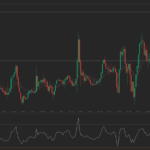 Yesterday’s trade saw EUR/USD within the range of 1.1883-1.1969. The pair closed at 1.1889, losing 0.37% on a daily basis.
Yesterday’s trade saw EUR/USD within the range of 1.1883-1.1969. The pair closed at 1.1889, losing 0.37% on a daily basis.
At 7:21 GMT today EUR/USD was down 0.10% for the day to trade at 1.1878. The pair broke the first key daily and the first key weekly support levels and touched a daily low at 1.1855.
Fundamentals
Euro zone
German unemployment
The number of the unemployed people in Germany probably dropped by 6 000 in December, according to the median forecast by experts, following a decrease by 14 000 during November and by 23 000 in October. The latter has been the most significant monthly decline since April, when unemployed were 25 000 less. A decrease implies that consumer spending may be more active, while the latter is tightly related to economic growth. An increase suggests the opposite.
At the same time, the seasonally adjusted rate of unemployment in the country probably remained unchanged at 6.6% in December, according to expectations. If confirmed, this would be the third consecutive month, during which the rate remains at this level. In October the number of unemployed people dropped to 2.06 million from 2.08 million in the preceding month, while employment rose by 33 000 to 39.78 million persons. If compared to the same month in 2013, employment in Germany grew 0.7%, while unemployment decreased 3.7%, according to the report by Destatis. Unemployment among persons aged between 15 and 24 remained unchanged at 7.7% in October.
In case the number of people unemployed decreased more than projected and the unemployment rate dropped, this would certainly support demand for the euro. The Federal Statistics Office will release the official data at 8:55 GMT.
Italian unemployment
The rate of unemployment in Italy probably reached a new record high level in November at 13.3%, according to the median forecast by experts, from 13.2% during the prior month. The number of unemployed people rose 2.7% in October compared to September to reach 3.41 million. At the same time, employment in the country was 0.2% lower to 22.374 million persons, while the number of inactive persons dropped 0.2% to reach 14.08 million during the month. Youth unemployment rate climbed 0.6% to 43.3% in October, according to the National Institute of Statistics.
In case the rate of unemployment increased more than anticipated, this might have a bearish effect on the common currency. Istat is to report the official rate at 9:00 GMT.
Euro area harmonized consumer inflation – preliminary estimate
The annualized preliminary consumer inflation in the Euro zone, evaluated in accordance with Eurostat’s harmonized methodology, probably decelerated to -0.1% in December, according to the median estimate by experts. If so, this would be the lowest inflation level since October 2009, when the final rate was reported at -0.1%. In November the final HICP reading pointed to annual inflation rate of 0.3%, which matched the preliminary estimate, as the drop in energy prices was the main driver behind the slowdown. The largest upward pressures to impact the regions annual inflation were recorded for restaurants & cafés (+0.09%), rents (+0.08%) and tobacco (+0.06%). In the mean time, prices of fuels for transport fell at an annualized rate of 0.22% in November, telecommunication costs and costs of heating oil were each 0.09% lower.
The index shows the change in price levels of a basket of goods and services from consumer’s perspective and also reflects purchasing trends. The main components of the HICP are food, alcohol and tobacco (accounting for 19% of the total weight), energy (11%), non-energy industrial goods (29%) and services (41%).
The Harmonized Index of Consumer Prices (HICP) is used to evaluate and compare inflation rates between Member States, according to Art. 121 of the Amsterdam’s Agreement and directives by the European Central Bank (ECB), in order the latter to achieve price stability and the implementation of monetary policy. The HICP aggregates are calculated as a weighted average of each member state’s HICP components.
In case the HICP slowed down more than anticipated, thus, further distancing from the 2% inflation objective set by the ECB, this would mount selling pressure on the euro, because of the greater possibility of introducing additional monetary policy measures in order to stimulate economic activity.
The annualized preliminary Core HICP for December probably increased at a rate of 0.6%, slowing down from 0.7% in November and October. If so, this would be the lowest annual core inflation on record, with the current lowest level being at 0.7%. This index excludes volatile categories such as food, energy, alcohol and tobacco. Eurostat is scheduled to release the official inflation data at 10:00 GMT.
Euro area unemployment rate
At the same hour, Eurostat will announce the rate of unemployment in the Euro region for November. It probably remained at 11.5% for the sixth consecutive month, while also being the lowest since September 2012. In October the lowest unemployment rates were recorded in Germany (4.9% in harmonized terms) and Austria (5.1%), while the highest unemployment was registered in Greece (25.9%) and Spain (24.0%).
The EU 28 unemployment rate was reported at 10.0% in October, steady in comparison with September and down from 10.7%, registered in October 2013. According to data by Eurostat, 24.413 million people in the EU28, of whom 18.395 million were in the Euro area, were unemployed in October. Compared to September the number of people unemployed increased by 42 000 in the European Union and by 60 000 in the Euro zone. Compared to October 2013 unemployment was lower in the EU28 (a decrease by 1.549 million), while unemployed people in the Euro area were 547 000 less.
Unemployed are considered to be all persons aged between 15 and 74, who have not been hired during the survey period, have been actively seeking employment during the past four weeks and are able to accept any job proposition right away or in two weeks time. A drop in unemployment in the region would support the single currency.
Italian consumer inflation – preliminary estimate
Italys preliminary annualized consumer inflation probably slowed down to -0.1% in December, according to expectations, from 0.2% in November, according to final data released on December 12th. If so, this would be the lowest annual inflation since September, when the Consumer Price Index (CPI) fell 0.2%. In November the largest upward pressures, causing an impact on annual inflation rate, were reported for food and non-alcoholic beverages (up 0.5%), restaurants and hotels (1.0%), clothing and footwear (0.3%), furnishing and household equipment (0.6%) and education (1.8%). The largest downward pressures came from transport costs (a 0.3% drop) and costs of communication, which were 2.6% lower.
Key categories, included in Italys Consumer Price Index, are food and non-alcoholic beverages (accounting for 16% of total weight), transport (15%), restaurants and hotels (11%) and housing, water, electricity and other fuels (10%). Other categories are clothing and footwear (9%), furnishing and household equipment (8%), recreation and culture (8%) and health (also 8%). Communication, education, alcoholic beverages, tobacco and other goods and services comprise the remaining 15% of the index.
The nations preliminary annualized CPI, evaluated in accordance with the harmonized methodology, probably decreased 0.1% in December, according to market expectations, following a 0.3% climb in November. If so, this would be the lowest annual harmonized inflation since September, when a 0.1% deflation was reported. The National Institute of Statistics (Istat) is to release the official CPI report at 10:00 GMT.
United States
Change in employment
Employers in the US non-farm private sector probably added 225 000 new jobs during December, according to the median estimate by experts, following 208 000 new positions added in November. The latter has been the lowest gain in jobs since August, when 202 000 jobs were added. The employment report by Automated Data Processing Inc. (ADP) is based on data that encompasses 400 000 – 500 000 companies employing over 24 million people, working in the 19 major sectors of the economy. The ADP employment change indicator is calculated in accordance with the same methodology, which the Bureau of Labor Statistics (BLS) uses. Published two days ahead of governments employment statistics, this report is used by traders as a reliable predictor of the official non-farm payrolls data. Creation of jobs is considered of utmost importance for consumer spending, while the latter is a major driving force behind economic growth. In case expectations were exceeded, this would bolster demand for the dollar. The official figure is due to be published at 13:15 GMT.
Balance of trade
The deficit on US balance of trade probably narrowed to USD 42.0 billion during November from a trade gap of USD 43.4 billion, registered in October. If so, this would be the smallest shortfall since August, when a deficit of USD 39.99 billion was reported. In October total exports expanded 1.2% to reach USD 197.5 billion, supported by record sales of capital goods as customers abroad purchased more American-made aircraft, generators and industrial equipment. Total imports surged 0.9% to USD 241 billion, due to the highest shipments of capital goods, foods, feeds and beverages ever recorded. Demand for foreign automobiles and parts also contributed to this increase.
The trade balance, as an indicator, measures the difference in value between the country’s exported and imported goods and services during the reported period. It reflects the net export of goods and services, or one of the components to form the Gross Domestic Product. Generally, exports are linked to economic growth, while imports indicate how strong domestic demand is. In case the trade balance deficit shrank more than anticipated, this would increase demand for the greenback. The Bureau of Economic Analysis will release the official trade data at 13:30 GMT.
FOMC Minutes
At 19:00 GMT the Federal Open Market Committee (FOMC) will release the minutes from its meeting on policy held on December 16th-17th. The minutes offer detailed insights on FOMC’s monetary policy stance. This release is closely examined by traders, as it may provide clues over interest rate decisions in the future. High volatility is usually present after the publication.
The Committee pledged to maintain borrowing costs close to zero for a considerable period of time, while also indicating that it was moving towards a rate hike at sometime this year. According to Federal Reserves most recent press release: ”Based on its current assessment, the Committee judges that it can be patient in beginning to normalize the stance of monetary policy. The Committee sees this guidance as consistent with its previous statement that it likely will be appropriate to maintain the 0 to 1/4 percent target range for the federal funds rate for a considerable time following the end of its asset purchase program in October, especially if projected inflation continues to run below the Committees 2 percent longer-run goal, and provided that longer-term inflation expectations remain well anchored. However, if incoming information indicates faster progress toward the Committees employment and inflation objectives than the Committee now expects, then increases in the target range for the federal funds rate are likely to occur sooner than currently anticipated.”
Pivot Points
According to Binary Tribune’s daily analysis, the central pivot point for the pair is at 1.1914. In case EUR/USD manages to breach the first resistance level at 1.1944, it will probably continue up to test 1.2000. In case the second key resistance is broken, the pair will probably attempt to advance to 1.2030.
If EUR/USD manages to breach the first key support at 1.1858, it will probably continue to slide and test 1.1828. With this second key support broken, the movement to the downside will probably continue to 1.1772.
The mid-Pivot levels for today are as follows: M1 – 1.1800, M2 – 1.1843, M3 – 1.1886, M4 – 1.1929, M5 – 1.1972, M6 – 1.2015.
In weekly terms, the central pivot point is at 1.2075. The three key resistance levels are as follows: R1 – 1.2151, R2 – 1.2299, R3 – 1.2375. The three key support levels are: S1 – 1.1927, S2 – 1.1851, S3 – 1.1703.





